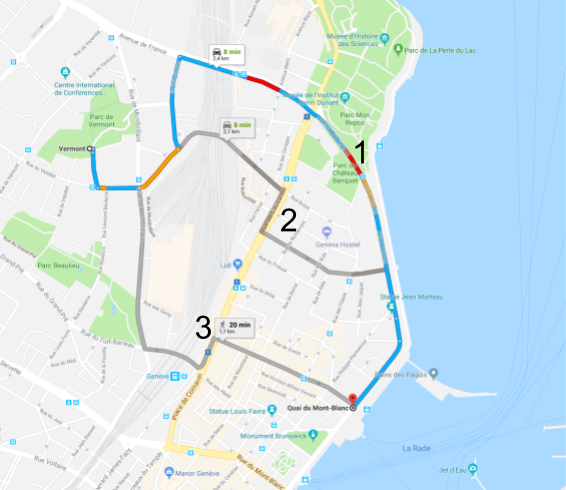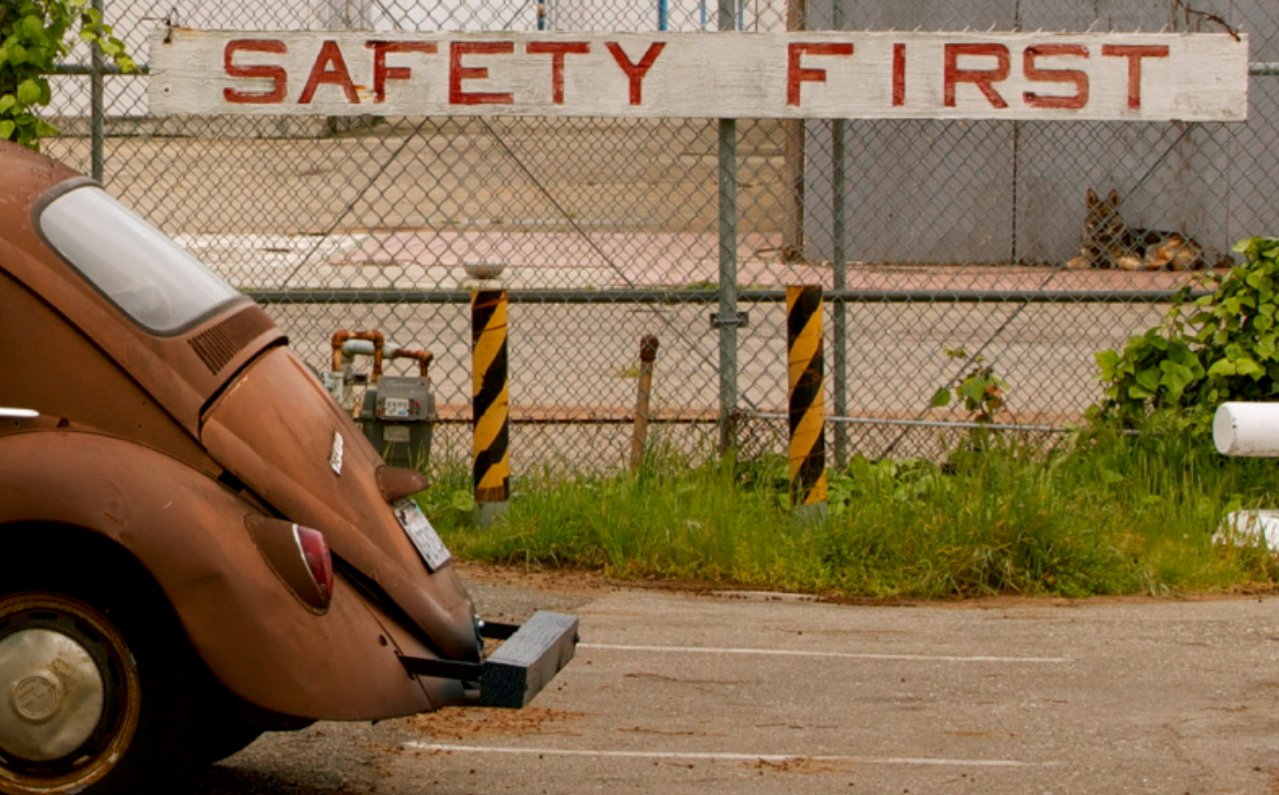Never wanted to choose a route for it safety and not only for its rapidity? Or maybe you have children and you want them to take the safest route late at night? Those are the key concepts behind the risk calculator! We want YOU to StaySafe.
This is more a proof of concept than a real tool (see limitations in the Jupyter Notebook associated). But here is an example, and you are welcome to play with the Jupyter Notebook above mentioned!
An example: from Vermont to Quai du Mont-Blanc
If we want to go from Vermont to Quai du Mont-Blanc in Geneva, Google maps would give us three choices:
here results for the 16/12/2017, 17h30:

Where we have denoted the possibles routes from the fastest (1) to the slowest (2). But what about our safety? We just enter the coordinates of the origin and destination as Google has translated them i.e. origin=Vermont,+1202+Geneva and destination=Quai+du+Mont-Blanc,+1201+Genève and put them into the calculator (function get_path_risk() in the Notebook ) to get:
| Route 1 | Route 2 | Route 3 | |
|---|---|---|---|
| Total Risk | 5.948168 | 4.173144 | 3.719490 |
| Mean Risk per Roads | 1.982723 | 2.086572 | 1.859745 |
For this example, it turns out that the slowest road is computed as the safest! As previously said, this is very uncertain, it advised to take a look to the Jupyter Notebook for a deeper discussion.

The procedure
As a starting point we had the computed risk for each road (as seen in the risk calculator). We then asked to Google maps the indications to go from a point A to a point B. We extracted the name of all the roads we should take to complete the itinerary and summed the risk of all the roads that we had to drive through. We repeated this last part for all the itinerary given by Google (usually three) and above you saw the results for one try. Since it is all done automatically, so we could compute the risk of a lot of different itineraries and maybe do an application out of it. We called it a proof of concepts, since the computation of the risk still need to be more accurate to extract usable information, but we see endless applications to this idea, and we hope that one day we will be able to save lifes thanks to it!